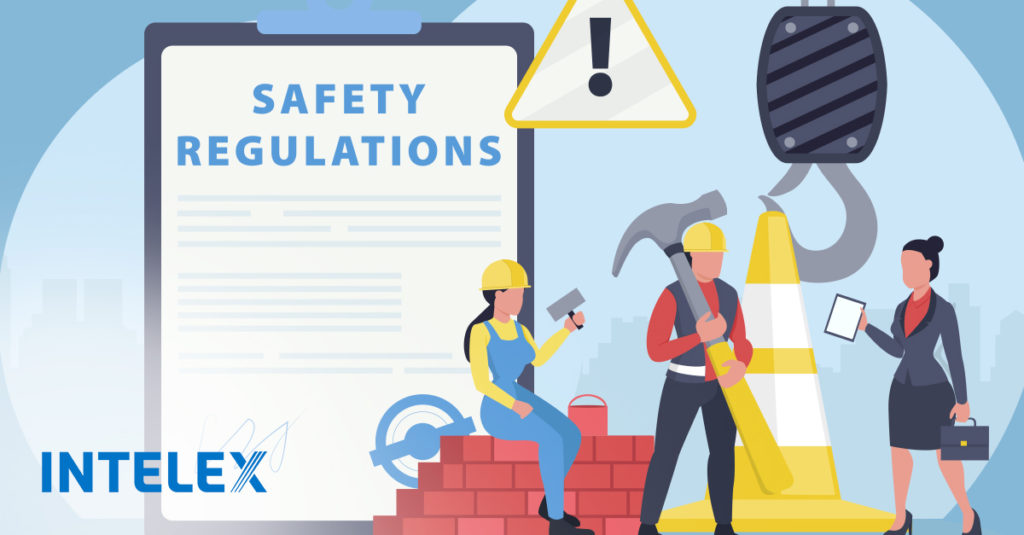How to Survive an OSHA Inspection: Part 1
January 5, 2022

This is Part 1 of a two-blog series explaining the expected course of OSHA inspections, the burden of proof required prior to an inspection, how to handle an informal complaint, and what to do when an OSHA inspection happens. Part 2 explores how to take control and manage an inspection.
Expect significant investigation activity from the U.S. Occupational Safety and Health Administration (OSHA) as the agency continues to increase its inspections under federal government priorities more favorable to enforcement.
Edwin Foulke, a partner with Atlanta-based law firm Fisher Phillips LLC, says new policies are driving OSHA enforcement to reduce workplace injuries and illnesses through an increased number of violation inspections. Previously, OSHA limited most inspections to fatalities, catastrophic incidents and pandemic-related issues, but this focus is shifting.
“They’re going to be looking to make up for lost time…for lost inspections, citations and penalties,” he says, adding there will be stronger enforcement pressure on those companies that violate rules. Foulke and fellow Fisher Phillips Partner Kristen White say businesses need to be prepared and know what to do. An inspection typically happens when:
- There is an imminent danger that was reported to them .
- A fatality or catastrophic incident occurs.
- An employee complaint – whether OSHA sends a letter or show up depends on how busy they are and the seriousness of the incident.
- An industry is deemed high hazard, such as construction.
- Inspection/enforcement activity around Special Emphasis Programs. Organizations should check these programs in their regions to better understand violations that a local OSHA agency prioritizes.
Expect to see the re-introduction of “unfriendly press releases” that publicly announce citations and fines imposed on companies with the intent to shame those that violate OSHA rules. OSHA fines are also increasing and have been doing so each year since 2016. Currently “willful” and “repeat” violations are subject to a maximum fine of $136,653, while “serious” and “other” violations are subject to fines up to $13,653.
“If they leave the (OSHA) budget bill as it’s currently set, then the penalty amount for willful and repeat (offenses) is going to go up to $700,000,” Foulkes says. Fines can be reduced by up to 40 percent based on factors that include the size of a business and good faith behavior. “But even if you get a 40 percent reduction…the minimum penalty will be $420,000 for one citation,” he says. Fines for violations deemed serious could rise to a maximum of $70,000.
Foulke predicts OSHA will be diligent in addressing whistleblower complaints and expect local, state and national governments to look more closely at safety records of those bidding for government contracts – particularly companies that have been penalized for willful and repeat offenses. Depending on their history, they could be barred from submitting bids on projects.
The private sector will look more closely at safety records and the OSHA histories of bidding contractors and vendors. “Guess what? If you don’t get the right score, then you’re not going to be able to bid,” Foulke said. “Part of that scoring is based on your OSHA records and workplace injury rates.”
Pre-Safety Inspection Action Plan
Be prepared before an OSHA inspector arrives by creating an action plan that assigns inspection-related activities and provides a checklist of things to consider. One of the most important elements is determining who should be notified if OSHA arrives to conduct an inspection. If a receptionist is the first point of contact, then make sure that person knows the notification process and who to reach out to.
An inspection doesn’t need to happen the minute OSHA arrives. You can ask them to wait up to 60 minutes before proceeding with an inspection, White says. Your safety inspector – the person you want to be involved in any inspection – may not be on site to accompany the investigator and perhaps need time to get there.
“They’re not going to want to wait, but it’s something you can enforce,” she says. “They’re not going to like it, but for you to get your right person to walk around with them, it’s going to be to your benefit.”
Also make sure your safety records and other documents such as programs and training material are in order. It will help to give the appearance of being organized and on top of things.
“We’ve heard from inspectors – that’s how they’re going to determine whether they’ll be in and out of your facility or if they spend all day there. It’s really that first impression,” White says. Other action plan considerations would include:
- Knowing the OSHA standards applicable to your operation and ensuring you are compliant
- Knowing your COVID control plan and all protective and precautions are in place
- What equipment is needed during an inspection
- Reviewing previous citations
- Reviewing insurance and third-party audits
Burden of Proof
There must be a clear set of reasons behind any OSHA investigation and the burden of proof required to conduct an onsite inspection includes:
- A cited standard that must apply to the condition
- Non-compliance with the standard
- Employees were exposed to or had access to the cited condition
- The employer knew of the hazard or should have known of it through due diligence
- The selected violation characterization (i.e., serious, willful or repeat) is appropriate
- A preponderance of evidence
As OSHA conducts its inspection, they may take photographs of places or things. Foulke says you need to be asking the inspector, “Why are they taking a photograph of that? And if you don’t know, you should ask them. Normally they’ll tell you.”
Handling an Informal Complaint
In this case of an informal complaint made by an unidentified source, rather than sending an inspector out to investigate, OSHA would most likely send a letter notifying a company that a complaint of an incident or violation has been received and would expect a response back to the letter within two weeks.
“When you put a response together, make it look like you really care about your safety program,” Foulke says, explaining that OSHA is required to do onsite investigations for up to 15 percent of complaints. He cautions against being too cavalier in your response, such as simply saying the company’s safety program is in place and perhaps whomever complained doesn’t know what they are talking about. A terse reply is likely to result in an inspection.
What To Do When an OSHA Inspection Happens
It’s important to have a playbook in place prior to an inspection happening, White says. Employers have rights they can assert during an inspection, but it’s important to consider the optics and always behave professionally rather than being confrontational. Think of it as a negotiation.
Front-line supervisors should understand that whatever they say may have serious consequences for their company. For example, a supervisor may not be fully aware of every circumstance and situation on a shop floor. Say for some reason a guardrail was removed from a piece of equipment and a supervisor was not informed. They might be asked: Why wasn’t the guardrail in place. And, unless you’re certain of the facts, White’s advice is to never guess or say anything you’re not certain about.
Supervisors shouldn’t feel like they must answer, she says. “They can say, ‘I don’t know (but) I’ll find out.’”
In the case of an unpreventable employee misconduct defense, companies should be able to show that safety practices and expected behavior rules are in place. Let them know employees have been trained on these and that safety inspections happen routinely.
“If you’ve got a great training program – you’ve trained your employees and auditing it – then defend that to OSHA,” White says.
Most Cited OSHA Violations
Finally, be aware of things OSHA most often looks for and what is most likely to trigger an investigation. Below is a list of the Top 10 most cited OSHA violations from 2021 and companies need to ensure none of these situations exist:
- Fall Protection, General Requirements (1926.501)
- Respiratory Protection (1910.134)
- Ladders (1926.1053)
- Scaffolding (1926.451)
- Hazard Communication (1910.1200)
- Lockout/Tagout (1910.147)
- Fall Protection (1926.503)
- PPE – Eye and Face Protection (1926.102)
- Powered Industrial Trucks (1910.178)
- Machine Guarding (1910.212)
Ready to take control during an OSHA inspection? Read Part 2 of this series to learn how to manage an on-site inspection, assert your rights, and maintain control of the process while staying compliant. Discover expert tips on navigating the inspection walkaround, handling interviews, and protecting your business every step of the way.






